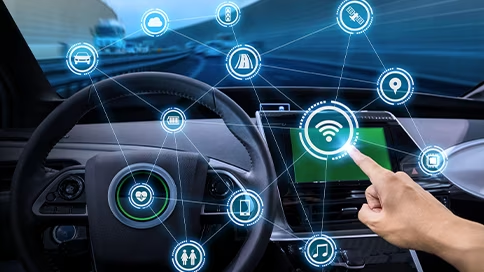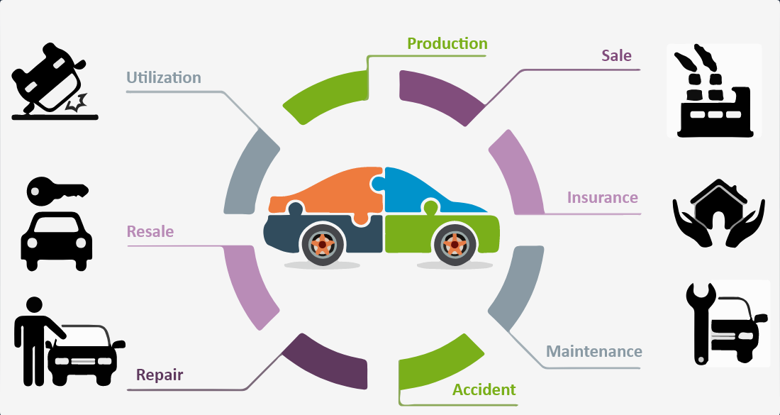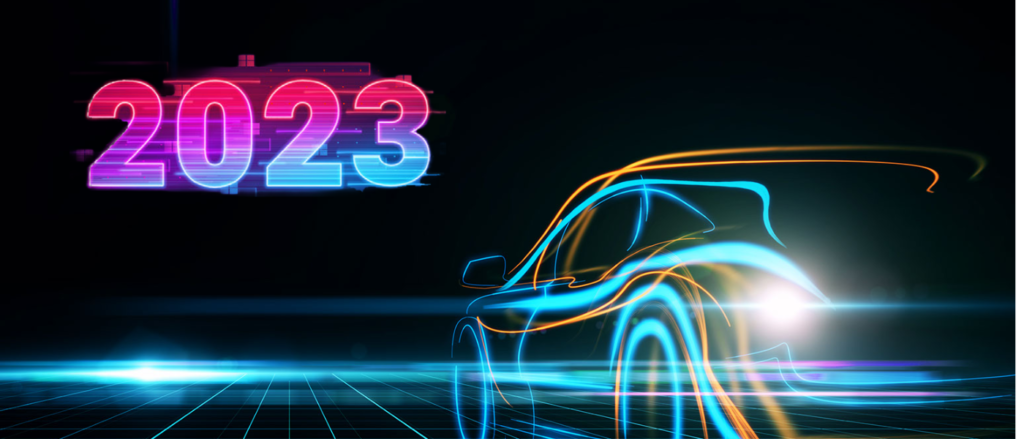Unquestionably, the automotive industry is emerging from one of its most difficult eras. The pandemic has caused a significant slowdown in the business during the past few years. Players should prepare for more challenging circumstances, principally caused by chip shortages, the global economic slowdown, price shocks, etc., now that the automotive sector trends show it is slowly returning.
EV adoption will accelerate, more automakers will add Internet of Things (IoT) capabilities to vehicles, hydrogen-powered cars will be introduced, and more developments will make this industry’s experience more exciting. This causes a more thorough investigation of the automotive sector. This article presents some of the key trends in the automotive sector for 2023. Let’s get going.
Continuous Expansion Of The Automotive Aftermarket
Automobile aftermarkets in Western developed economies grow as cost-conscious drivers become less willing to exchange their current vehicles for newer models. Three main elements handle this market saturation:
- Better and more durable automobiles
- Robust used-car markets
- Buyers are waiting for the cost of electric vehicles to come down so they may switch.
In Europe, the average age of an automobile is now 12 years old, up from just 7.4 years in 2014. The average age of cars has also risen in North America, from 11.4 years in 2014 to 12.2 years in 2022. With over 750 million passenger automobiles operating between the two continents, this consumer behavior is anticipated to increase demand for tires, spare parts, and car chemicals.
In fact, except for China and Developed Asia, the global automotive aftermarket increased by 3% to $64 billion in 2022, growing steadily in all categories and all countries. Nearly three-quarters of the value of aftermarket sales are made up of tires, which increased by 2% in 2022. Spare parts increased by 6%, and vehicle chemicals increased by 8%.
What Are The Automotive Trends In 2023?
The automobile industry’s future tendencies show players can expect a wild ride. Global headwinds like the oil crisis, slowing global demand, and lingering supply-chain concerns will affect the car industry in 2023. Despite these obstacles, global new-vehicle sales are anticipated to stay flat, with new-car sales rising. EV sales are anticipated to increase, despite the possibility that governments may change the structure of existing incentive schemes.
To accommodate the growing EV fleet, the government will need to put more emphasis on charging networks. The industry for driverless vehicles will advance when UN officials raise its speed cap. Let’s look at the trends influencing the auto sector in 2023.
1. Increasing The Output Of Digital Cars
Automakers and industry titans like Google and Tesla are incorporating more digital technology into cars. As a result, there is already a race to establish digital systems and automotive software to power and regulate cutting-edge electric vehicles. Cars made in 2023 and later will be loaded with technology to handle digital touchpoints.
2. Increased Internet Sales
Automakers in North America and Europe allow customers to buy cars online without going to a showroom. Buyers can select desired features, obtain financing, and even conduct virtual tours and test drives using a computer or smartphone. According to statistical analysis, more dealerships should start providing online sales, vehicle inspections, and home delivery by 2023.
3. The Growing Preference For Old Or Pre-Owned Vehicles
Vehicles under four years old, which have the newest innovations yet are less expensive than new cars, are in high demand. Dealerships now provide certified pre-owned cars that cost less and appear and act like new cars, which includes previously owned electric and hybrid vehicles. Pre-owned cars are an appealing alternative because of low APR financing options.
4. More Connected Vehicles
Vehicles that connect wirelessly to the Internet of Things are known as connected cars. They provide a secure, cozy, and practical multimedia experience with on-demand functions that enable users to browse the internet while driving. They offer various services, including turn-by-turn navigation, 4G LTE Wi-Fi hotspots, vehicle health reports, and remote diagnostics. With the help of maintenance and predictive intelligence technologies, the technology will expand quickly in 2023 after handling over a billion consumer requests.
5. Increased Use Of Autonomous Vehicles
Self-driving cars are becoming more and more prevalent. According to market survey, autonomous vehicles increase last-mile delivery options, decrease downtime, and increase fuel efficiency. Several trucking firms have experimented with self-driving technology. Soon, fleets of autonomous trucks will coexist with conventional vehicles.
6. Fuel Cell Electric Vehicle Launches
Due to their quicker recharge, greater range, and absence of pollution, fuel-cell electric vehicles are expected to become more commonplace in every country by 2023. Major automakers, including those in China, Germany, Japan, South Korea, and the United States, are funding the development of fuel-cell electric vehicles. Fuel-cell electric vehicles might make a breakthrough this year.
7. More Automakers Are Partnering With Tech Firms
Automakers and technology firms are developing collaborations because of the continuously changing technological requirements for automobiles. This is especially important for connected, driverless, and electric vehicles because they need specific software and cutting-edge technology to operate properly. Manufacturers are collaborating with tech firms to create and produce the new operating systems required for the following generation of technologically advanced automobiles to avoid making significant investments in their technology divisions. According to statistical analysis, in 2023, further partnerships are anticipated.
Top Automotive Marketing Trends in 2023

Global Automotive Trends To Watch In 2023
Let’s now examine the major trends influencing the automotive marketing landscape:
1. Video Marketing Is Changing
According to consumer trends, short films are more effective than text at turning leads into consumers in the car industry. Dealerships can benefit from various video formats, including how-to videos, automobile highlights, and client testimonials. Tours of auto dealerships are also very popular right now. Dealers and sellers might use virtual reality or films to their advantage.
2. Increase In VR Technology Use
As VR technology advances, the metaverse is growing in popularity. Since buyers prefer to try a car or dealership out before making a purchase, car dealerships are no exception to this rule, according to recent auto trends. Virtual reality enables clients to examine an automobile without physically visiting a dealership. Leading automakers and dealers incorporate VR into their dealership photography tactics to enhance the client experience.
3. Enhancing Mobile Interactions
Modern car purchases require smartphones. On their mobile phones, consumers conduct extensive market survey into the dealerships and incentives available for their selected car. Therefore, websites must have clear calls to action, be easily read, and be available on mobile devices.
4. Modernizing Built-In Messaging Programs
In the automotive sector, messaging services and chatbots are important technological advancements. With the help of these technologies, dealerships may respond to inquiries quickly, freeing up time for other responsibilities. They simplify dealership operations by facilitating the management of maintenance and repair appointments.
5. Spending On Digital Advertising Has Increased
The amount spent on digital marketing by the automobile sector rose to $17 billion in 2022, and 2023 is expected to see more growth. According to experts, increasing mobile and social media usage rates will increase expenditure on digital advertising. Dealerships must have a strategic plan to attract online shoppers at various points in the car-buying process by utilizing social media marketing, click-to-call conversions, and messaging apps.
Conclusion
Significant global developments will impact the automobile sector in 2023 and define its future. With improvements in battery technology and infrastructure construction, the adoption of electric vehicles is anticipated to continue growing quickly. Incorporating autonomous driving features will pick up steam, enhancing convenience and safety on the roadways. The development of platforms for mobility-as-a-service and the emergence of shared mobility will change how individuals access and utilize transportation. Additionally, the development of eco-friendly cars and the adoption of circular economy principles will continue to be driven by sustainability and environmental consciousness. By 2023 and beyond, these trends will completely alter the automotive industry.
Maction is a leading market research agency that provides the best technology-driven survey platform available. With our considerable experience, we can help you gain the suitable consumer insights necessary for designing your creative strategy.
Contact the expert consultants at Maction Consulting today.



